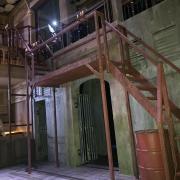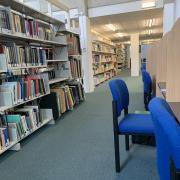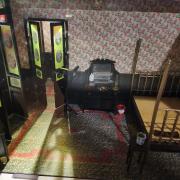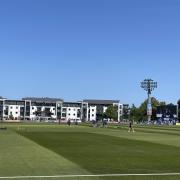
Batemans is a National Trust owned site in Burwash, East Sussex. This was the home of Rudyard Kipling, who got inspiration from his surroundings to write his stories. He has based some if his stories on the mill that was in the gardens of his home, that is believed to be on the site since the 1200’s. Due to age and neglect by the Kipling family, it has had many restorations works, including a big restoration project that started in 1969 and ended in 1975. The mill’s most recent restoration started in 2015 and now this year sees the completion of the project and the reopening of the mill to the public. I asked some questions to the House, Castle and Collections Manager, Gary Enstone about this significant event for Batemans.
We don’t really hear of mills anymore. To me, they seem like a statue from a past life. Like a building of history, which should be preserved for future generations. I have never seen a traditional mill working before. This was one of my first questions to ask Gary about. “The mill is a traditional water mill. It runs an overshot method with the water being channelled down a pen trough from the mill pond. The mill pond would have been fed by the River Dudwell many years ago. However, the River Dudwell has dropped in height and as a result the mill pond is fed by a natural spring. As the weight of water is not considerable, we can only mill for a short time each week. This usually consists of 6-8 hours each week.”
Continuing on the theme of work, I asked Gary why Bateman’s Mill stopped working and what caused it to become this way. “The Mill was a working mill up until the end of the 1890’s. It was still in a good condition when Rudyard Kipling bought it in 1902, if a little tired. However, Rudyard has a romantic vision that the Mill at the bottom of the garden, would be a good “story.” That story would be better if the mill was derelict and would be a muse for Rudyard. He thought it represented “olde” England and the history of the lands and it being in a derelict state suited the story better. As a result, the mill was allowed to fall into a poor state and in some cases even with a touch of help from the Kipling’s themselves. When the property was handed to the National Trust in 1939, the Mill was in a very poor state.”
To hear this was really sad. The Kipling’s had taken action to destroy a lovely mill, just to make a fantasy for his characters in his books. Luckily, the Mill is being restored to its former glory. This is not what Kipling would have wanted as he would “lose his rackety olde derelict mill at the bottom of the garden. Where will the fairies live?”
Gary explains why they restored the mill: “Many of our visitors enjoy the experience of the Mill. It’s not just the sight of it, but the sound, smell, the whole round experience of the working mill. The Mill allows us to have another type of visit – the mechanical, industrial heritage type. It is also important to give people the opportunity to see and experience this radically disappearing type of production and way of life.”
He also hopes that the National Trust can start milling flour with the mill again, “ from plot to plate”.
Lastly, he summed up the restoration process as “long, challenging and frustrating”. I know many people however, will be very pleased that the mill will be up and running soon. So, thank you to Gary and his extensive team for the care and restoration of the mill that should be open again to the public in the summer.





























